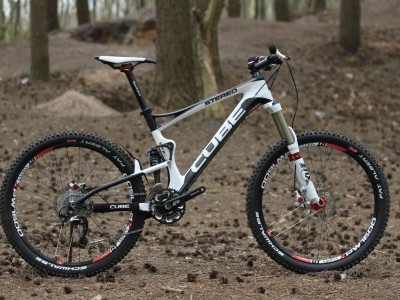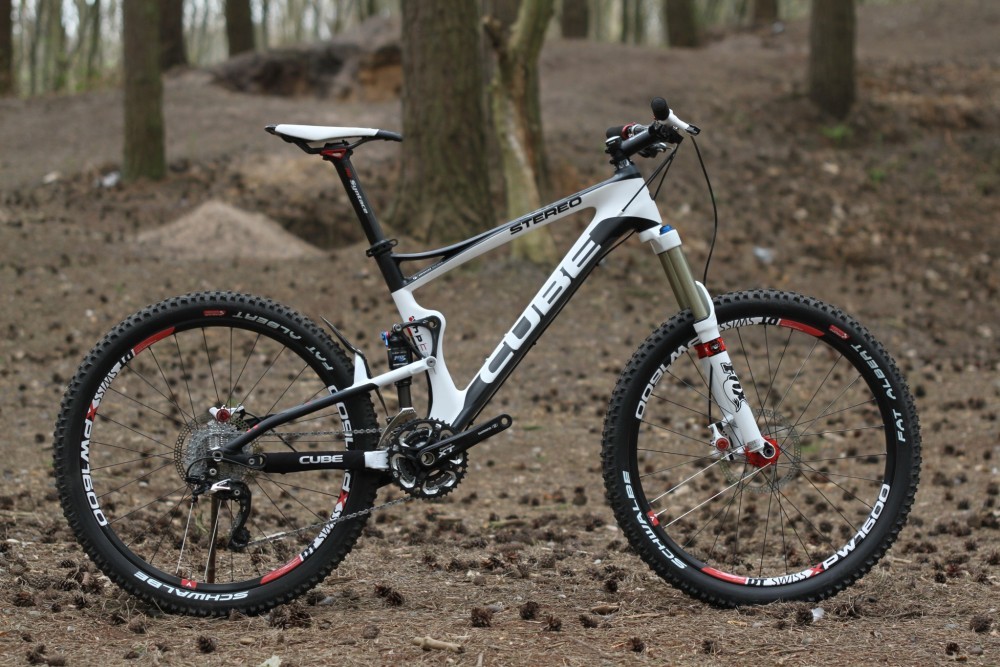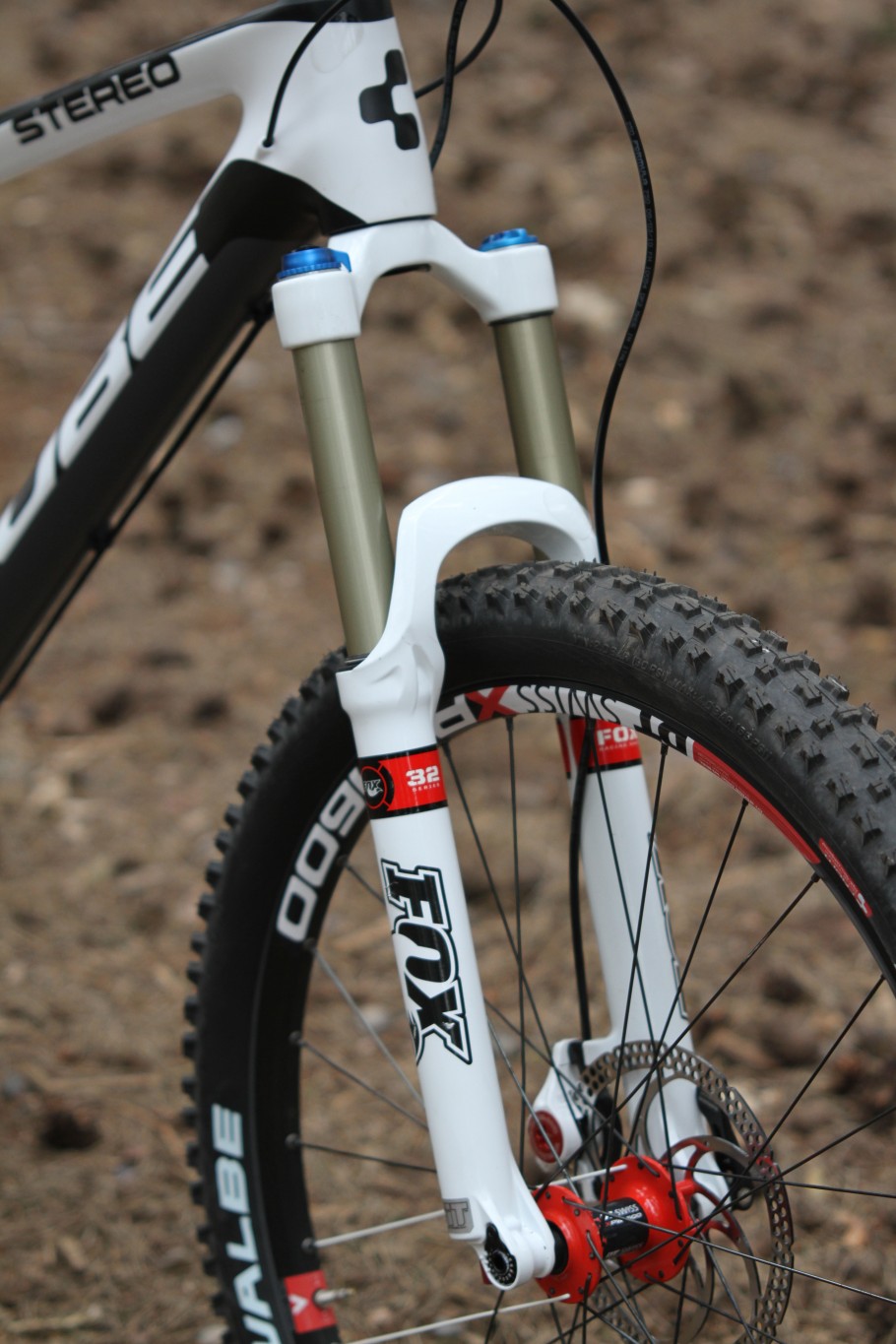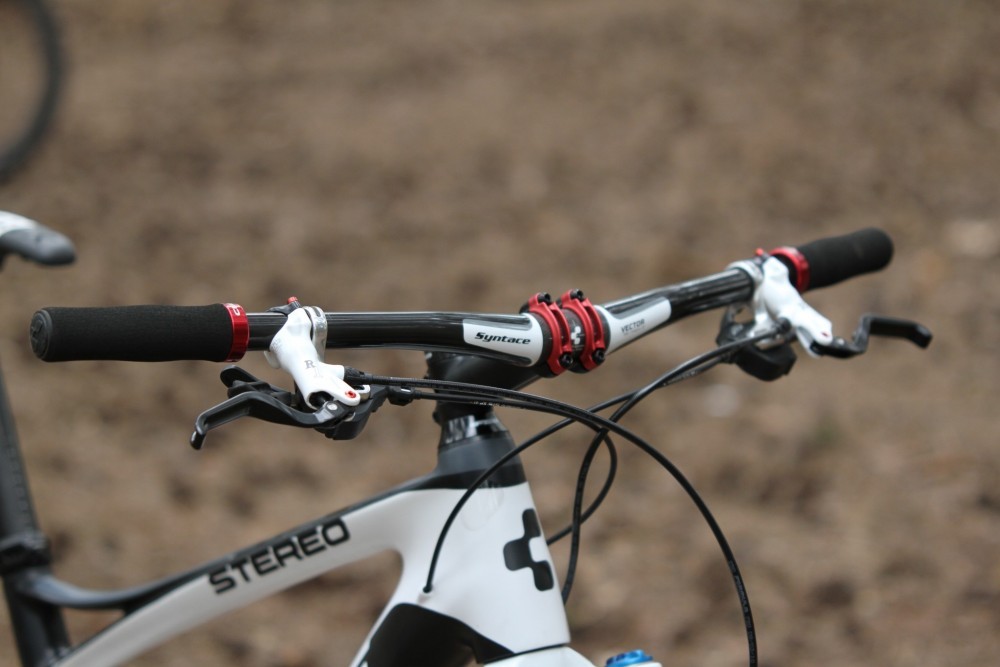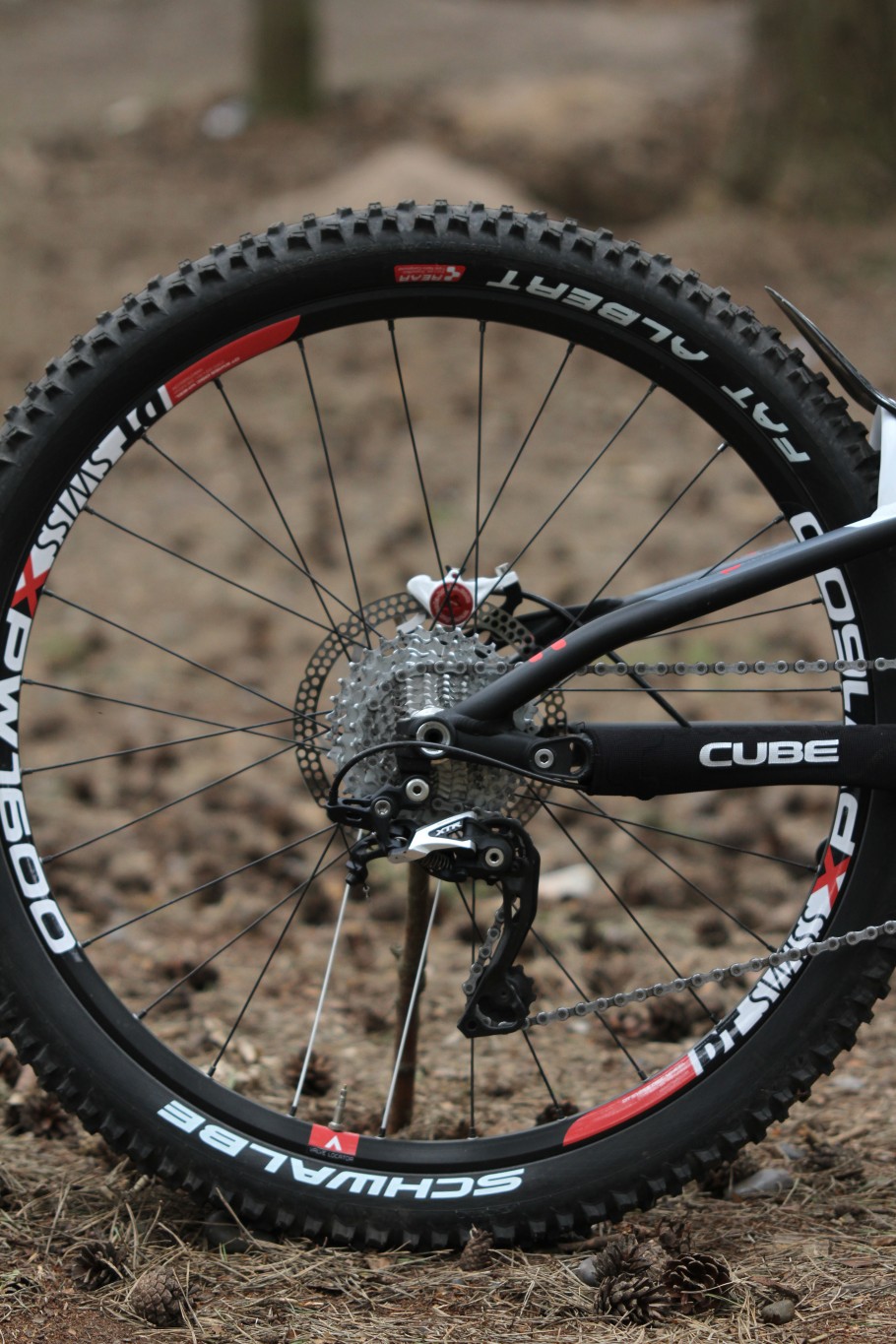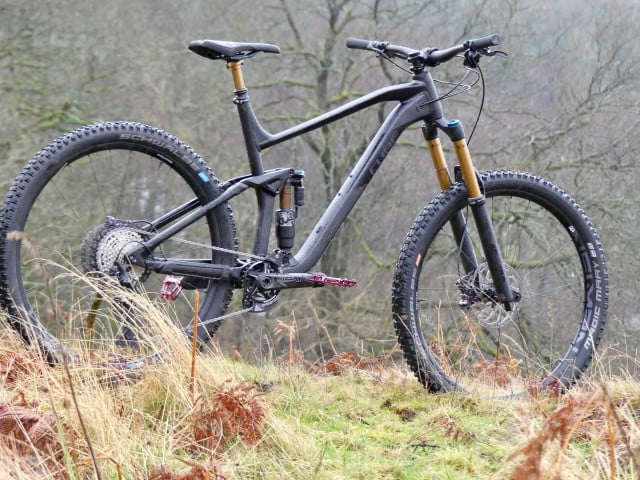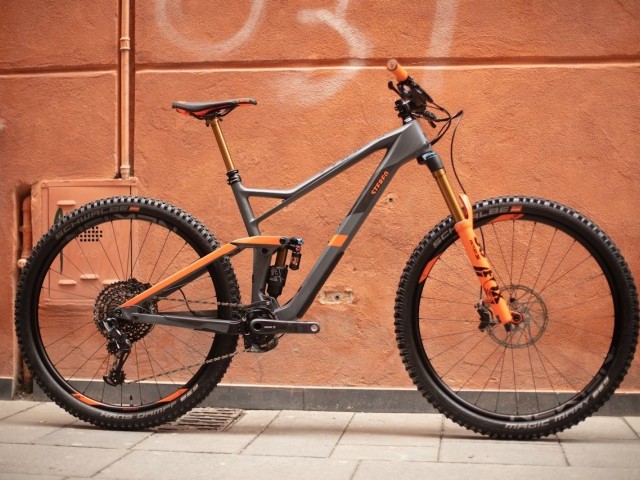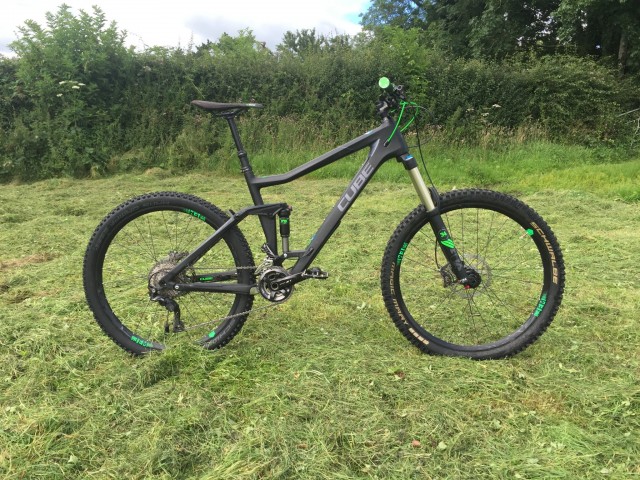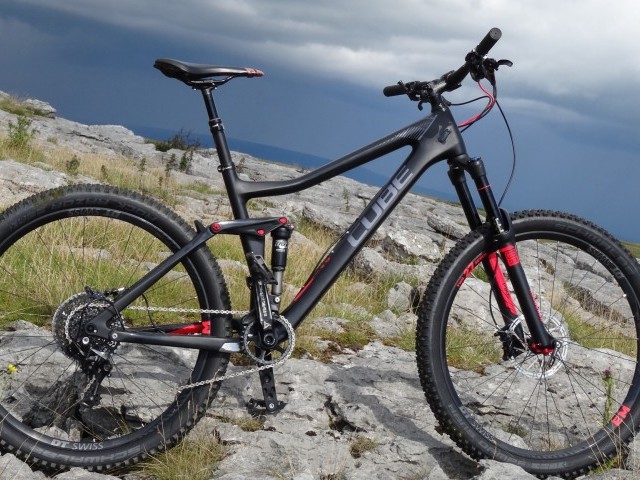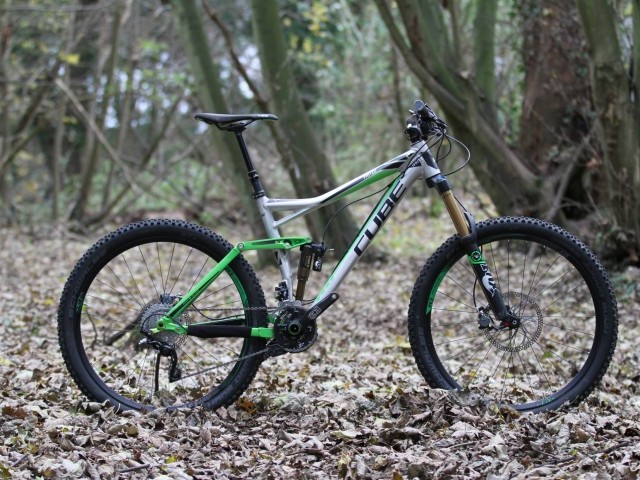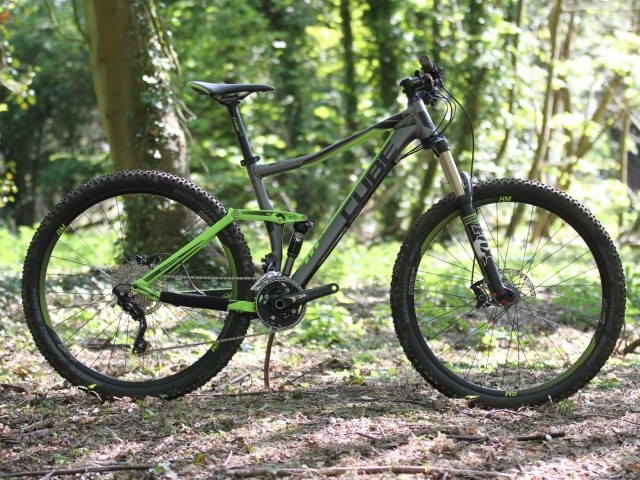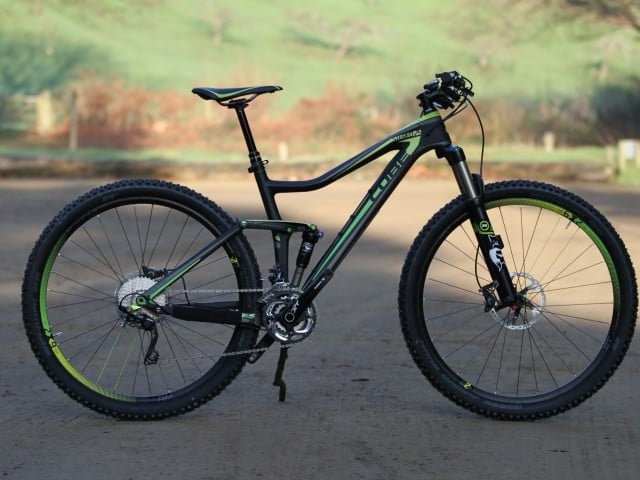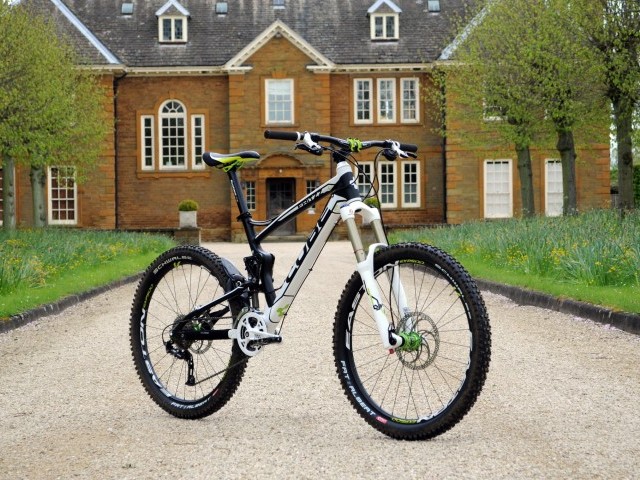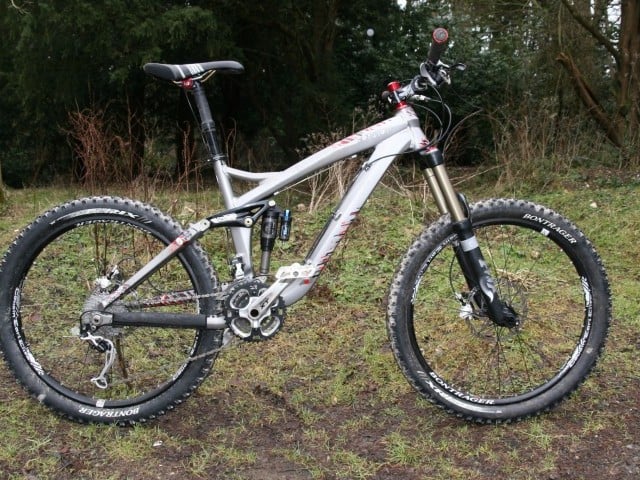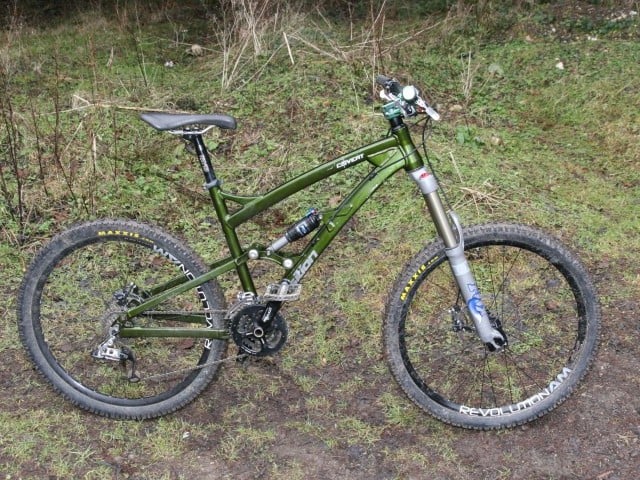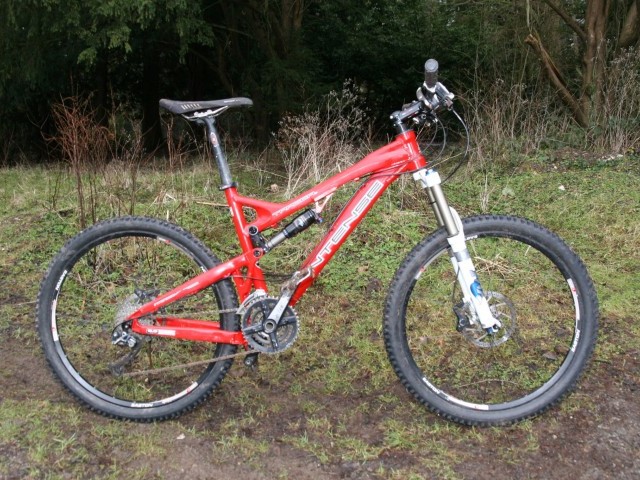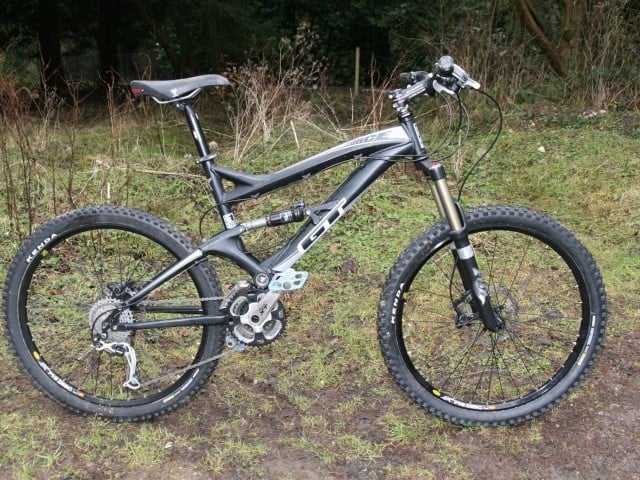At A Glance
The colour scheme on the Stereo means you are not going to miss it in a crowd and once it has drawn your eye to it then you start to notice the typically Teutonic engineering.
Buy Enduro Bikes on
Several things start to dawn on you as you look at it, not least the enormous 34.9mm seat post that is white just to make sure you do not miss it. But there is more to this bike than bright flashes of colour and big seat posts, it is beautiful made, well engineered and there are some thoughtful touches like internal cable routing and a robust mud guard to protect the rear shock from muck and grim.
This is the top model in the Stereo range and has some interesting nuances and we were eager to get out and see if the theory would translate to performance.
Tech Heads
This Stereo features Cube’s HPC carbon front triangle with the swing arm being HPA 7005 aluminium.
The heart of the bike is Cubes take on a four pivot suspension system that they have coined Dual Trail Control. In essence the floating shock is actuated upside down in order to allow the rear triangle to work independently of the main frame. Bob inducing negative pedalling forces are combated by the path of the virtual pivot, brake jack is also negated.
A Fox Float RP23 Boost Valve shock performs flawlessly giving 140mm of travel whilst up front a set of Fox 32 Talas RLC FIT 110/130/150mm forks with tapered steerer, lockout and a 15mm through axle is a top of the range piece of kit with plenty of adjustment.
Geometry wise is where things can sound a little odd on paper.
By fitting a Talas fork Cube have given you 3 different travel options which in turn affect the geometry of the bike.
At its maximum extension of 150mm travel the head angle is 68º, a rule of thumb is that for every inch or 25mm of adjustment the head angle will increase by approximately 1º. This means that at 130mm the head angle is around 69º and when fully dropped to 110mm the head angle is around 70º.
The seat tube angle comes in at 74º but this is measured from the base of the seat tube rather than the bottom bracket, the seat tube does not come straight up from the bottom bracket but is bought up the down tube in order to create room for the shock. This means that although the Stereo has a short top tube its effective top tube length is more in keeping with the norm. One benefit of this seat tube arrangement is that when things get gnarly and you drop the saddle it not only drops down but forwards more than on other bikes too, this gives lots of room off the back of the bike and stops you getting hooked up on the saddle.
Drive train is all Shimano XTR and never missed a beat.
Braking is taken care of by Formulas R1 carbon levered wonders and they supplied oodles of stopping power via excellent modulation.
Syntace supply the stem, carbon bars and that huge white carbon seat post. There is a Fizik Gobi XM to perch on.
Wheels are provided by DT Swiss, the XPW1600’s are light and strong and have striking good looks and are shod with Schwalbe Fat Albert 2.4 tyres.
The Stereo HPC weighs in at exactly 27lbs on our scales.
On The Trail
This bike is the 18 inch which would normally be ideal for our 5’11’’ testers but we found we needed to push the saddle right back on the rails to get into the right position relative to getting our knee caps in line with the pedal axle. Once that was done the bike felt pretty comfy and whilst the effective top tube is quite short the 100mm stem counteracted that.
Once going there was a taut feeling from the rear suspension that gave plenty of feedback from the trail, it felt like there was very little small bump absorption yet you could stay seated and pedal easily. After experimenting by riding a particularly bouncy, stutter section of trail we realised that there is sufficient to make things comfortable but not so much as to lose feedback.
Our test loop has a mid length climb on an easy surface and heading up this looking at the rear suspension it became apparent that there is very little bob, in fact that taut suspension felt more like a shorter travel bike and with the Talas set at the 130mm setting the angles were perfect for steady climbing. On steep, slippery climbs with the front end dropped right down the back end seeking out traction we cleared some extremely difficult sections.
Cranking up the speeds is a breeze as the bike responds well to a pedal input and we were soon craving through woodland singletrack. As with most top end bikes a sense of urgency brings out the best and the shortish top tube meant that the bike was quite flickable, though the long stem just holds the steering back a touch.
Turning downhill the bike felt too front end bias so the Talas was set at 150mm and suddenly the balance felt much better. The Stereo does not flow downwards with the fluidity of a DH rig but it does allow you to give it its head as it holds its composure through rough sections. Launching off 4 foot drops sunk the rear end deep into its travel and we suspect anything bigger would push the bike out of its comfort zone.
For
The stand out feature of the Stereo is that it pedals very efficiently. Climbing is rapid and through single track and on double track a quick stamp on the pedals will give a burst of acceleration reminiscent of a much shorter travel XC machine.
Having the Talas up front gives the bike versatility and increases its appeal to a broader range of riders, it also puts the Stereo into that group of bikes that is capable of being the only bike you will need to own.
All the kit is top draw and performs as such, smooth shifting comes as standard and the brakes are a pleasure to use.
The mud guard that protects the rear shock has a little note on it to make you smile when you are cleaning your bike…
Against
Once through the taut early part of the suspension stroke there is a touch of wallow and then it tends to blow through the final stages of travel, we fettle with the setting but could not eliminate this.
That seat post, it is not that it does anything wrong in itself but we would have liked to fit a laidback seat post but the size of the fitted one means that is no mean feat.
Schwalbe Fat Albert tyres are a middle of the road performer and do not compliment this bike. Slightly draggy on fast trails and not the best grip when riding hard we would like to see this bike specced with a set of fast large volume treads.
Overall
Our XC oriented tester loved this bike and ran it with the Talas set in the 130mm position, flicking it down to 110mm when he went blasting up climbs. Another ran it in 130mm most of the time and extended it to 150mm when heading down trails they would have bulked at without the extra travel and more relaxed head angle. Then I started out running it in 130mm but was not that happy with the balance so I extended it out to 150mm and that is where it stayed as I found it was much more comfortable and the head angle of 68º suited me.
The point is that this bike will suit a number of different riding styles, as a XC style 140mm travel bike it is simply top draw and it is capable of taking on technical trails with roots and rock gardens.
So if you are one of those riders that thinks you would like a little more travel but do not want the penalty of high weight and soft suspension then you need to getting your hands on one of these for a test ride.
It is no accident that with a few days away in Wales coming up that I just so happen to have the Cube Stereo HPC in the back of the van…. Nice!
Buy Enduro Bikes on
This review was in Issue 11 of IMB.
For more information visit CUBE BikesRelated
By Nigel Garrood
Nigel Garrood was one of the instigators of the IMB project and has been with us since the very beginning. This loveable rogue has more stories than the Bible and is known to enjoy a beer or two. On the bike, he’s fast and loose and often puts younger riders to shame. Equally he’s been known to suffer from the odd crash and carries the scars to prove it. He was once referred to as being a robot sent from the future to save us all!

